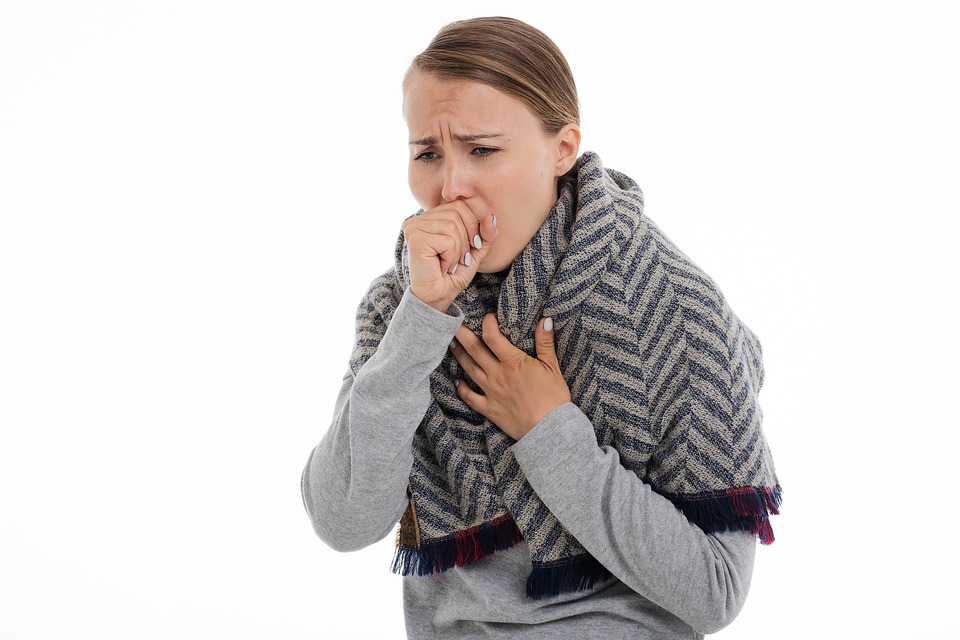When it comes to cancer, specifically lung cancer, the symptoms can be very subtle and sometimes it will only appear as the disease progresses. One possible symptom lies in a person’s breathing.
Symptoms of conditions, in general, can be very tricky to spot, as one condition may have the same set of symptoms as another. Express reports that a way to spot if one may have lung cancer is through their breathing. If a person experiences pain when breathing or even when coughing, the latter of which is another symptom, then it is possible that they may have the disease.
Other symptoms related to this include a cough that has been present for more than three weeks, an unusual change in a cough one may have had over a long time, and constant chest infections or chest infections that do not seem to heal. A hoarse voice may also be a symptom of the cancer, as is coughing up blood, the swelling of the neck, and a drooping eye. While these symptoms may indicate the disease, there are chances that it is a symptom of another condition.
Meanwhile, it was previously reported that another symptom of lung cancer can be found in the hands. Express also reports that there are three signs on a person’s hands that can tell if they may have the disease or not. Finger clubbing is an indicator of the cancer, with the changes in the hands and nails becoming evident. According to Cancer Research UK, a person with lung cancer may have digital clubbing on their hands or also known as Hippocratic fingers.
This kind of clubbing starts in stages, the earliest being the change in the base of the nail. The base of the nail will soften and the skin around it will become shiny. A later stage of digital clubbing will see nails curving more than usual when viewed from the side. This will eventually be followed with the ends of the fingers becoming larger in appearance and sometimes referred to as “drumstick fingers.”
The elderly are at a bigger risk for developing lung cancer, as are heavy smokers. People who do not smoke are also susceptible to the disease, whether exposed to secondhand smoke, air pollution, previous respiratory diseases and prolonged exposure to chemicals like asbestos.



 Eli Lilly Becomes First Pharma Giant to Hit $1 Trillion Amid Soaring Weight-Loss Drug Demand
Eli Lilly Becomes First Pharma Giant to Hit $1 Trillion Amid Soaring Weight-Loss Drug Demand  Novartis to Acquire Avidity Biosciences for $12 Billion to Strengthen Rare Muscle Disorder Portfolio
Novartis to Acquire Avidity Biosciences for $12 Billion to Strengthen Rare Muscle Disorder Portfolio  FDA Memo Raises Questions About Possible COVID-19 Vaccine Links to Rare Child Deaths
FDA Memo Raises Questions About Possible COVID-19 Vaccine Links to Rare Child Deaths  Trump Signs Executive Order to Boost AI Research in Childhood Cancer
Trump Signs Executive Order to Boost AI Research in Childhood Cancer  Cogent Biosciences Soars 120% on Breakthrough Phase 3 Results for Bezuclastinib in GIST Treatment
Cogent Biosciences Soars 120% on Breakthrough Phase 3 Results for Bezuclastinib in GIST Treatment  U.S. Backs Bayer in Supreme Court Battle Over Roundup Cancer Lawsuits
U.S. Backs Bayer in Supreme Court Battle Over Roundup Cancer Lawsuits  Novo Nordisk Appoints Greg Miley as Global Head of Corporate Affairs Amid U.S. Pricing Pressure
Novo Nordisk Appoints Greg Miley as Global Head of Corporate Affairs Amid U.S. Pricing Pressure  Eli Lilly’s Inluriyo Gains FDA Approval for Advanced Breast Cancer Treatment
Eli Lilly’s Inluriyo Gains FDA Approval for Advanced Breast Cancer Treatment  U.S. Experts to Reassess Newborn Hepatitis B Vaccination Guidelines Amid Growing Debate
U.S. Experts to Reassess Newborn Hepatitis B Vaccination Guidelines Amid Growing Debate  Trump Backs Review of U.S. Childhood Vaccine Schedule After Hepatitis B Policy Change
Trump Backs Review of U.S. Childhood Vaccine Schedule After Hepatitis B Policy Change  Eli Lilly’s Weight-Loss Pill Nears Fast-Track FDA Approval as Profits Surge on Global Demand
Eli Lilly’s Weight-Loss Pill Nears Fast-Track FDA Approval as Profits Surge on Global Demand  Novo Nordisk and Eli Lilly Lower Prices for Weight-Loss Drugs Amid U.S. Agreement
Novo Nordisk and Eli Lilly Lower Prices for Weight-Loss Drugs Amid U.S. Agreement  Obamacare Premiums Set to Double in 2026 as Subsidy Expiration Looms Amid U.S. Shutdown
Obamacare Premiums Set to Double in 2026 as Subsidy Expiration Looms Amid U.S. Shutdown  Trump Administration to Launch Autism Initiatives Targeting Acetaminophen Use and New Treatment Options
Trump Administration to Launch Autism Initiatives Targeting Acetaminophen Use and New Treatment Options  Innovent’s Xinermei Intensifies Weight-Loss Drug Battle in China
Innovent’s Xinermei Intensifies Weight-Loss Drug Battle in China 





























